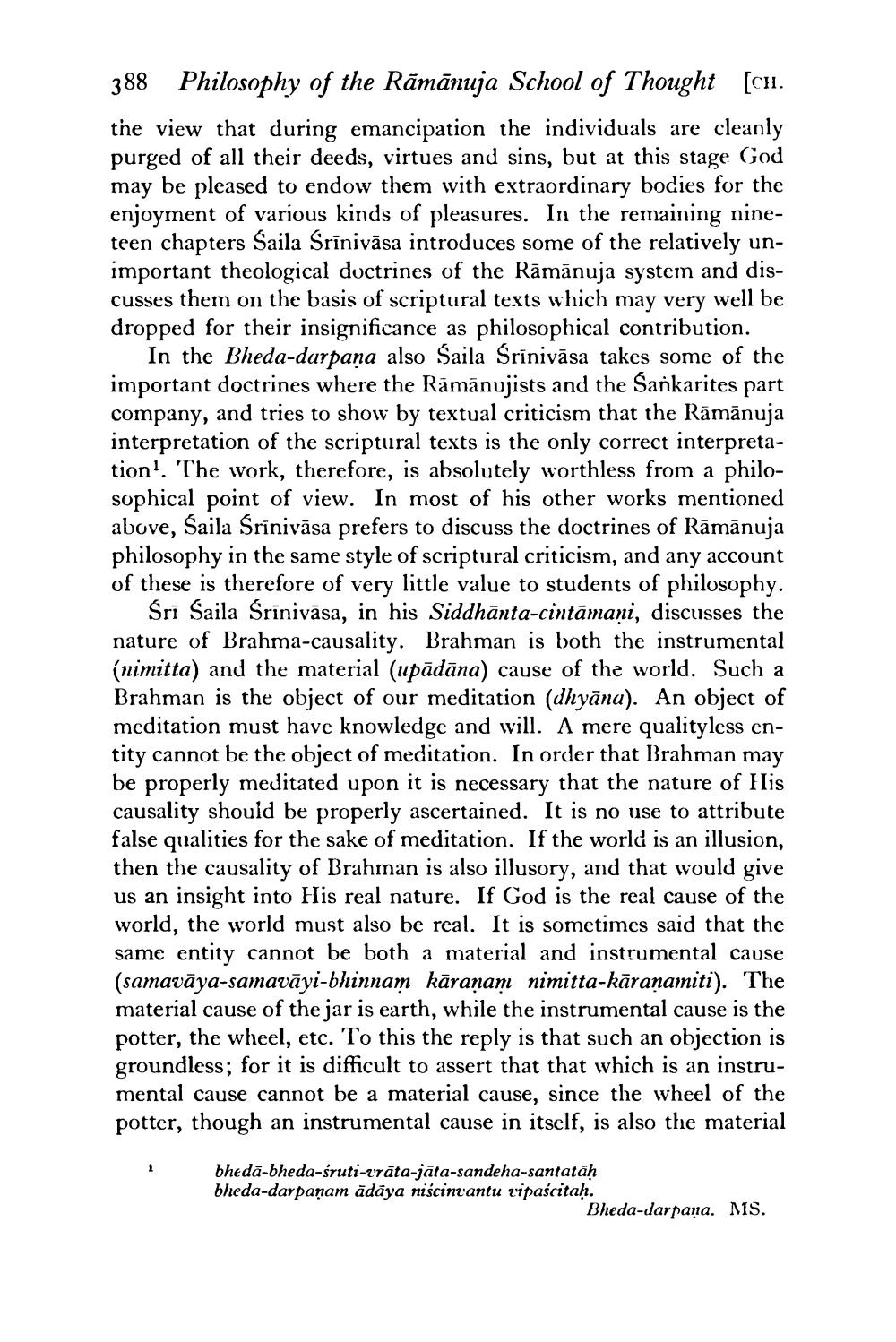________________
388
Philosophy of the Rāmānuja School of Thought [CH.
the view that during emancipation the individuals are cleanly purged of all their deeds, virtues and sins, but at this stage God may be pleased to endow them with extraordinary bodies for the enjoyment of various kinds of pleasures. In the remaining nineteen chapters Saila Śrīnivāsa introduces some of the relatively unimportant theological doctrines of the Ramanuja system and discusses them on the basis of scriptural texts which may very well be dropped for their insignificance as philosophical contribution.
In the Bheda-darpaṇa also Saila Śrīnivāsa takes some of the important doctrines where the Ramanujists and the Sarkarites part company, and tries to show by textual criticism that the Rāmānuja interpretation of the scriptural texts is the only correct interpretation'. The work, therefore, is absolutely worthless from a philosophical point of view. In most of his other works mentioned above, Śaila Srinivasa prefers to discuss the doctrines of Rāmānuja philosophy in the same style of scriptural criticism, and any account of these is therefore of very little value to students of philosophy.
Śrī Saila Srinivasa, in his Siddhānta-cintamani, discusses the nature of Brahma-causality. Brahman is both the instrumental (nimitta) and the material (upādāna) cause of the world. Such a Brahman is the object of our meditation (dhyāna). An object of meditation must have knowledge and will. A mere qualityless entity cannot be the object of meditation. In order that Brahman may be properly meditated upon it is necessary that the nature of His causality should be properly ascertained. It is no use to attribute false qualities for the sake of meditation. If the world is an illusion, then the causality of Brahman is also illusory, and that would give us an insight into His real nature. If God is the real cause of the world, the world must also be real. It is sometimes said that the same entity cannot be both a material and instrumental cause (samavāya-samavāyi-bhinnam kāraṇam nimitta-kāraṇamiti). The material cause of the jar is earth, while the instrumental cause is the potter, the wheel, etc. To this the reply is that such an objection is groundless; for it is difficult to assert that that which is an instrumental cause cannot be a material cause, since the wheel of the potter, though an instrumental cause in itself, is also the material
bheda-bheda-sruti-vrāta-jāta-sandeha-santatāḥ
bheda-darpanam ādāya niścinvantu vipaścitaḥ.
Bheda-darpana. MS.




